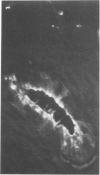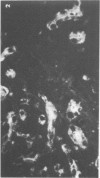Abstract
Many reports have demonstrated an elevation of circulating carcinoembryonic antigen (CEA) in the majority of patients with alcoholic liver disease and, less frequently, in patients with nonalcoholic liver disease. Several explanations for this finding have been proposed, eg, increased production or release of CEA by the damaged liver, decreased hepatic metabolism, or diminished excretion of CEA of extrahepatic origin. In an attempt to clarify the mechanism of CEA elevation in liver disease, we have compared the CEA plasma level as measured by radioimmunoassay with CEA demonstrable in liver tissue by the indirect fluorescent antibody technique in 7 patients without significant changes in the liver biopsy specimen, 23 patients with alcoholic liver disease, and 16 patients with miscellaneous liver diseases such as acute or chronic nonalcoholic hepatitis or extrahepatic biliary obstruction. The mean CEA plasma level in patients with alcoholic liver disease was significantly higher than in patients with nonalcoholic liver disease (8.8 +/- 9.5 vs 2.7 +/- 2.5 ng/ml; P less than 0.02). In normal liver tissue, CEA was observed in the apical cytoplasm and along the luminal surface of bile duct epithelial cells, suggesting that under normal conditions CEA accumulates in and is excreted by bile ducts. In patients with alcoholic hepatitis and/or cirrhosis there was marked bile ductular proliferation and prominent cytoplasmic CEA-specific staining and both were associated with elevated CEA plasma levels in more than 80% of cases. In the group of miscellaneous liver diseases, bile ductule counts and CEA-specific staining did not correlate with CEA plasma levels. These observations suggest that proliferating bile ductules contribute to elevated plasma CEA in alcoholic patients.
Full text
PDF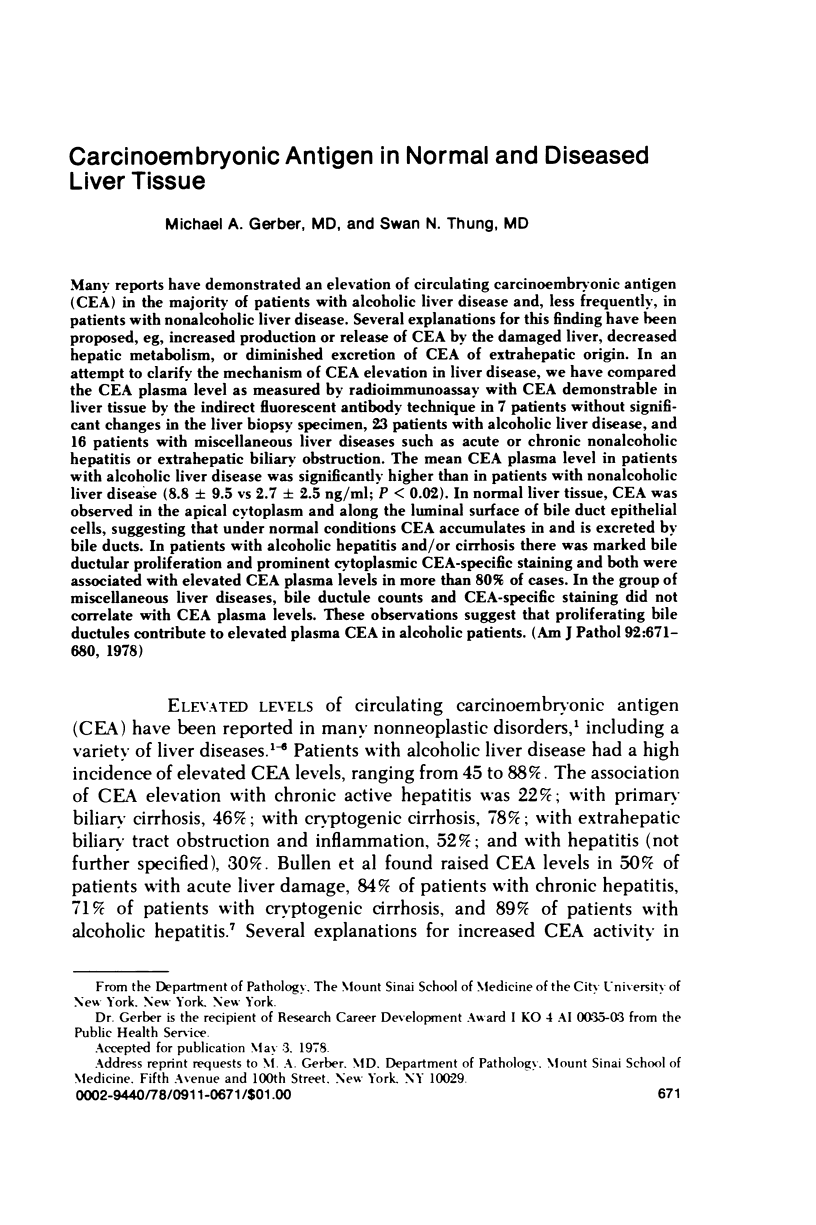
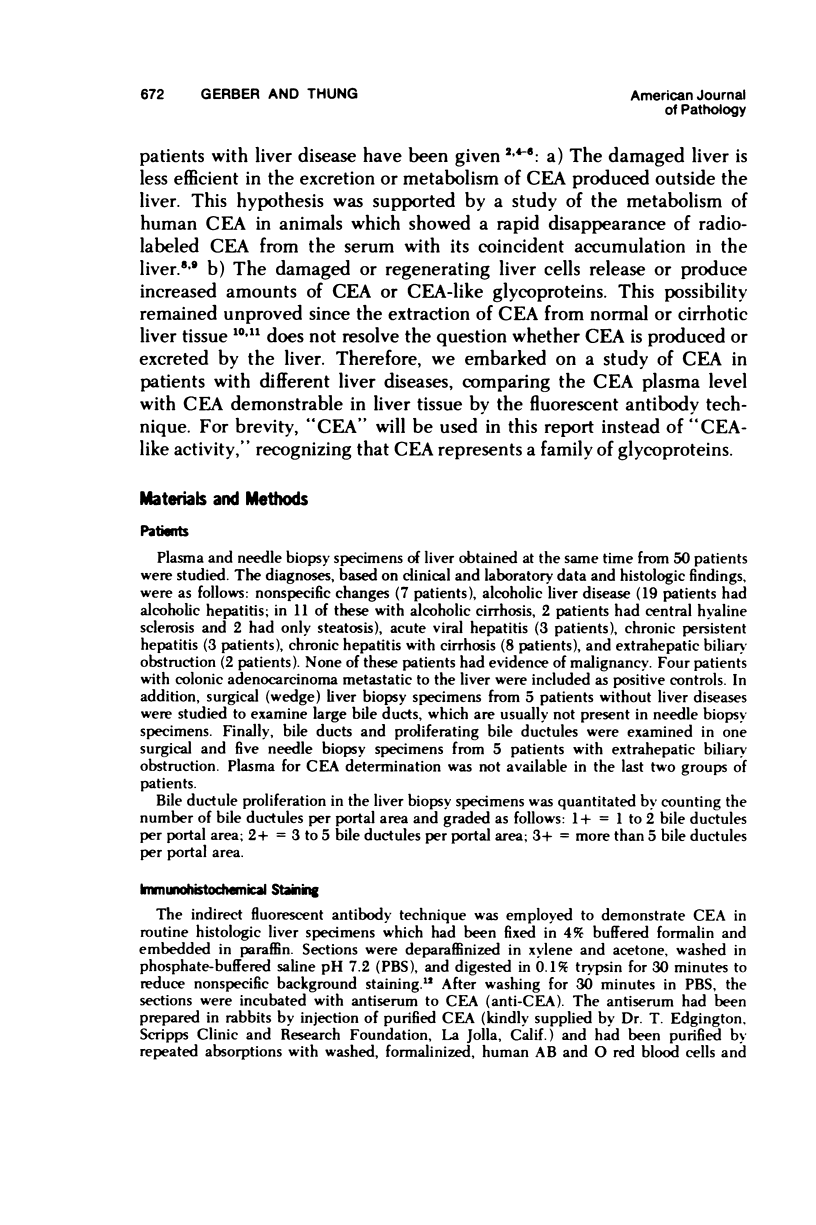
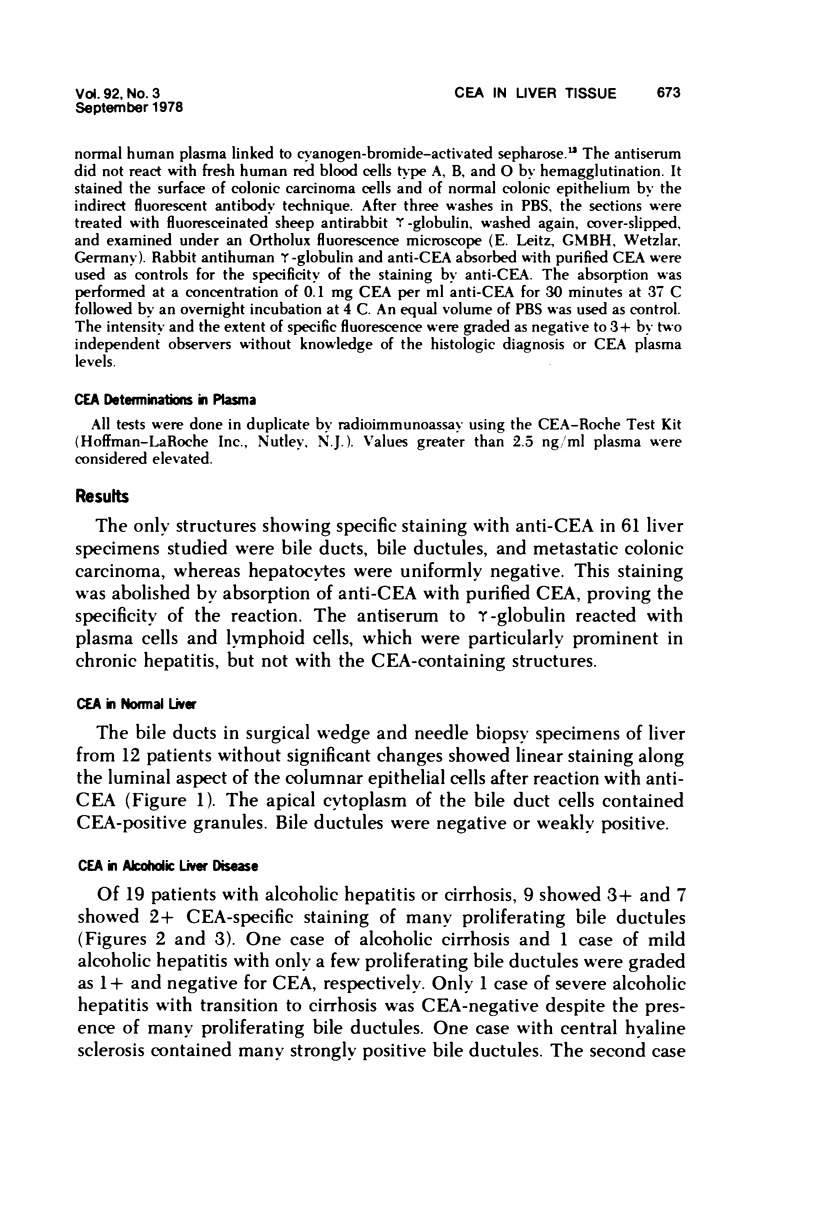
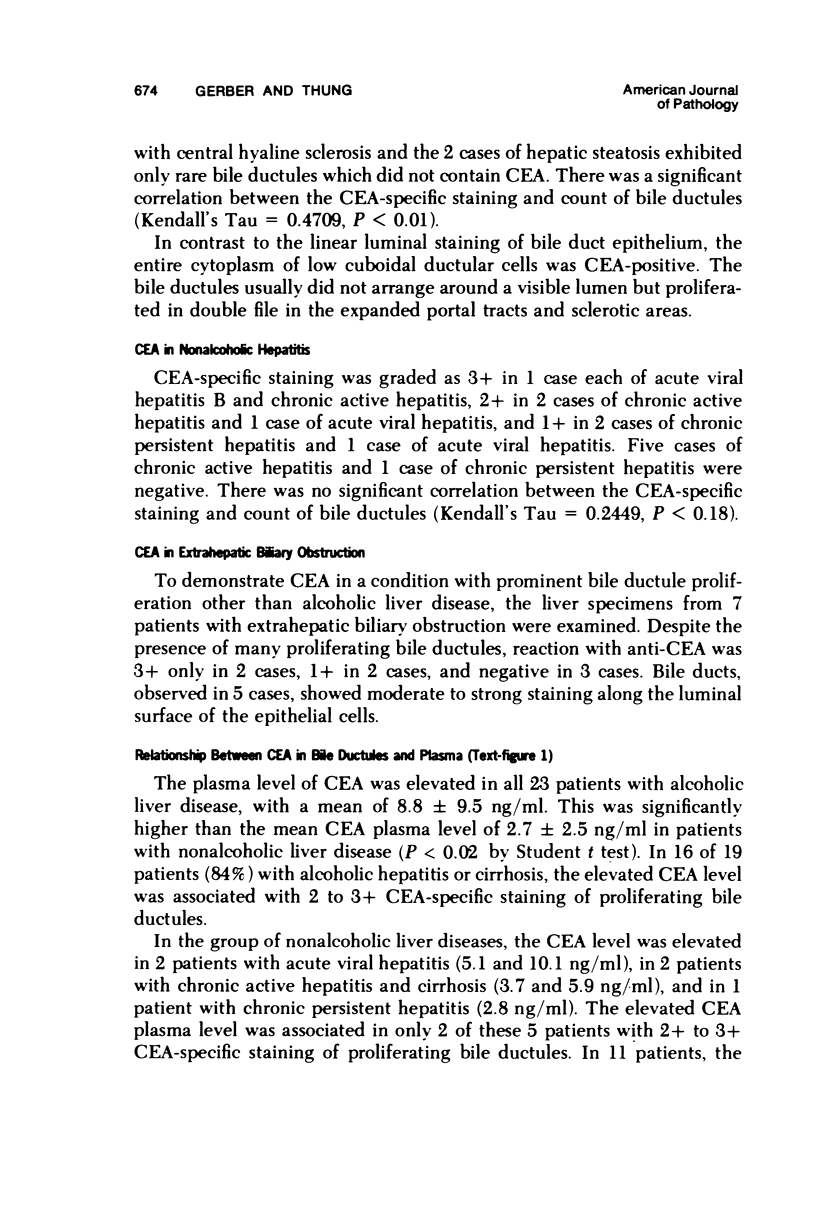
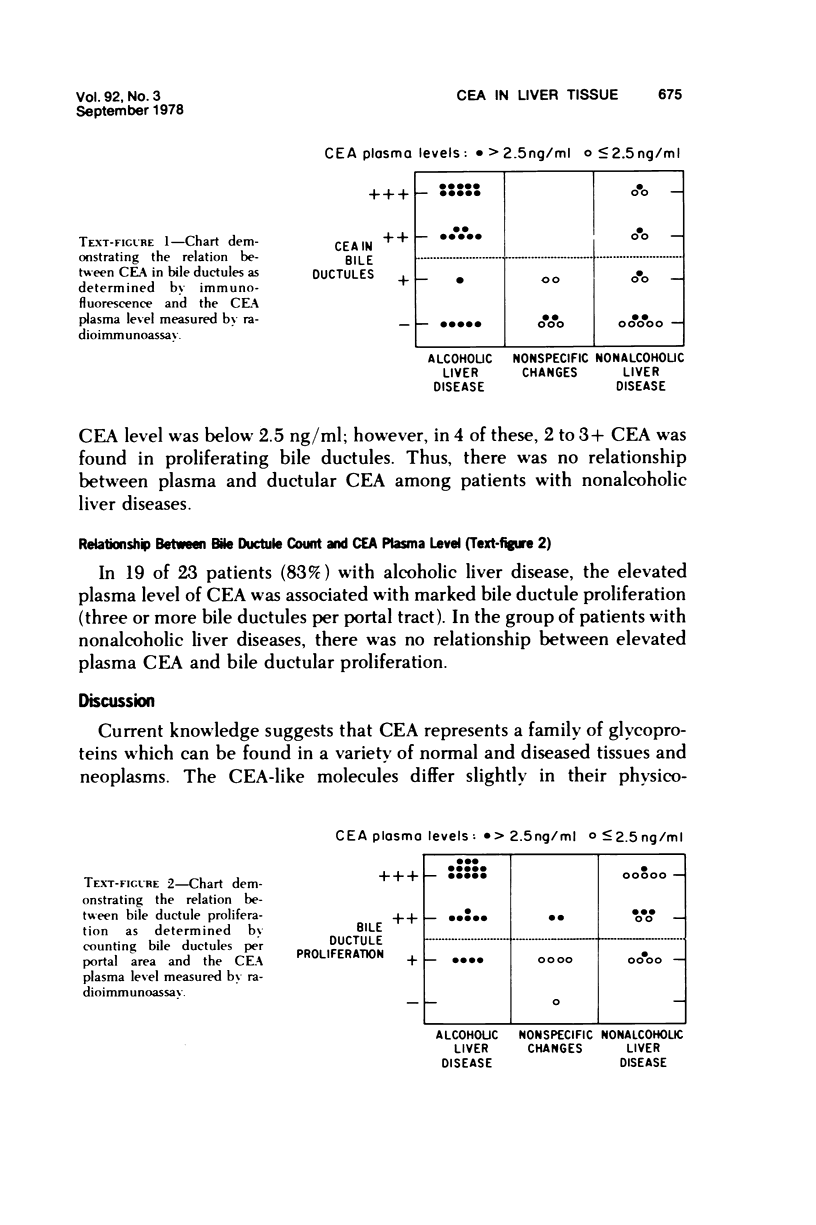
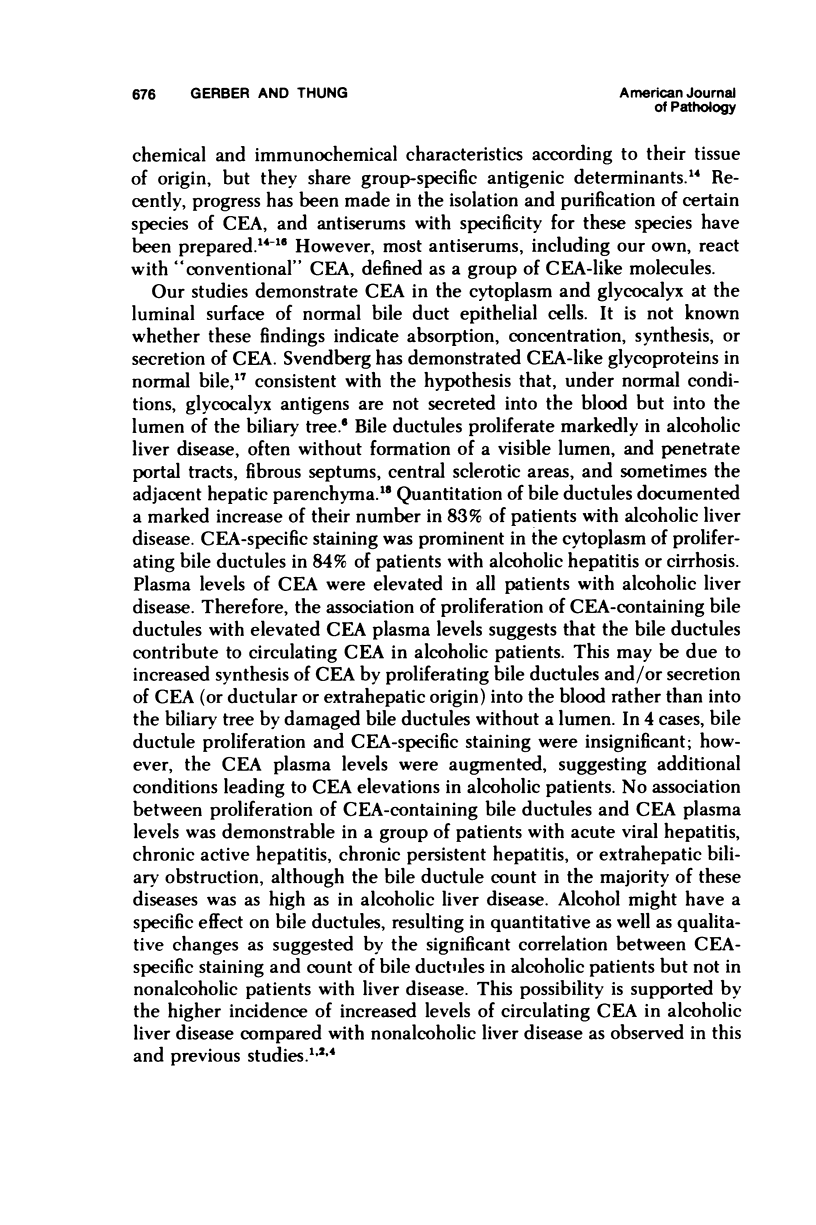
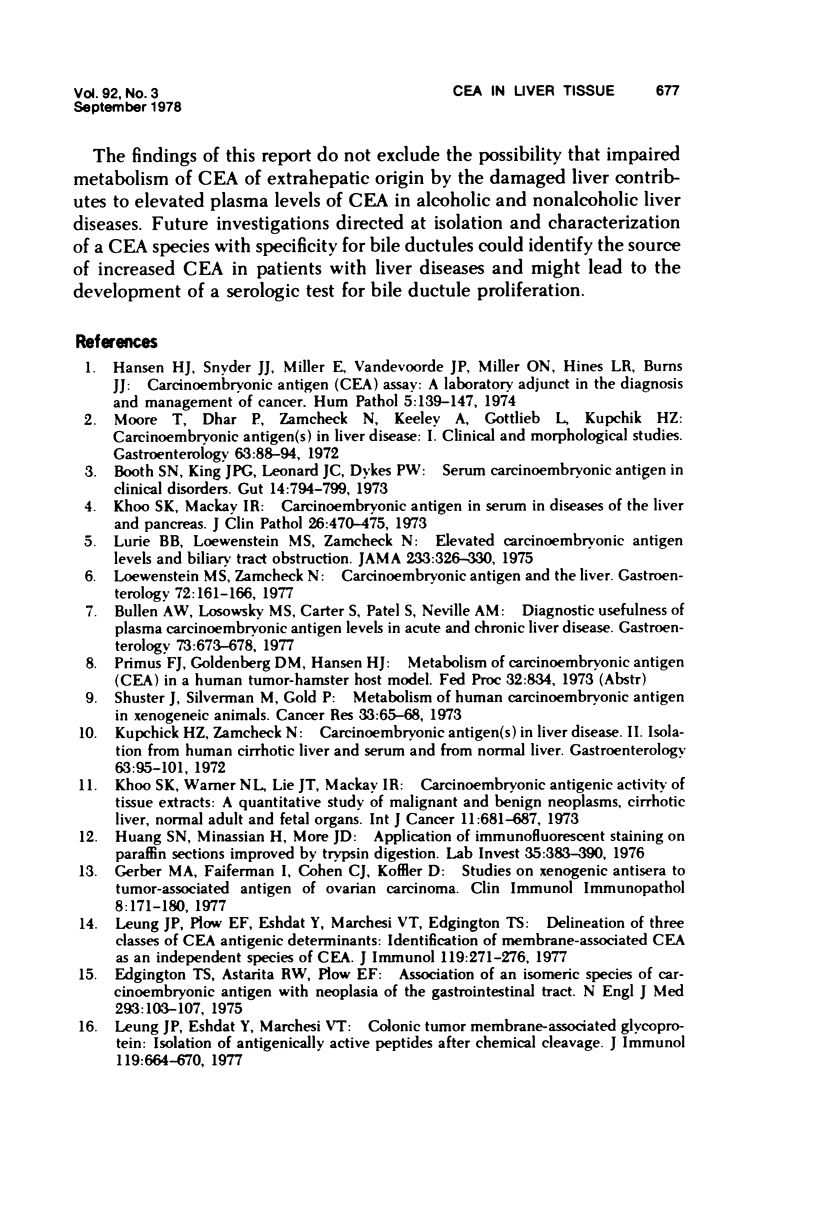
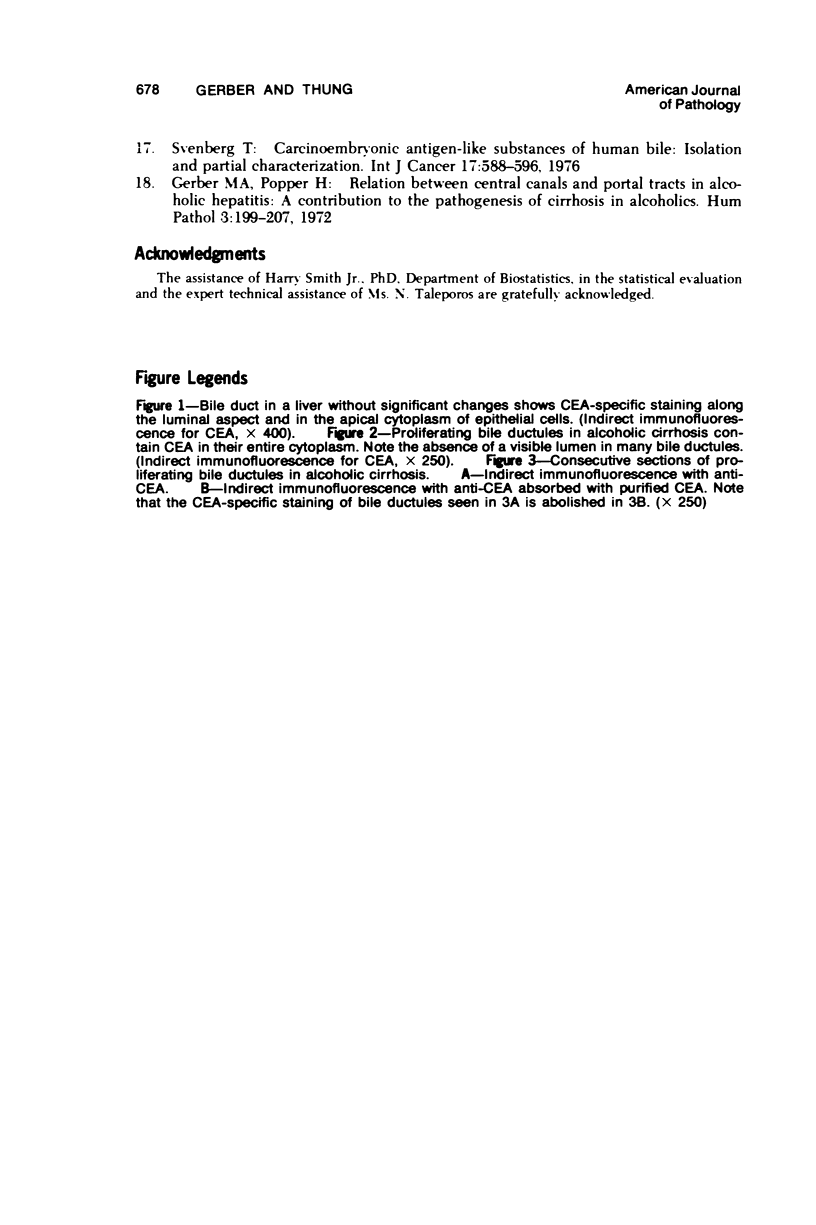

Images in this article
Selected References
These references are in PubMed. This may not be the complete list of references from this article.
- Booth S. N., King J. P., Leonard J. C., Dykes P. W. Serum carcinoembryonic antigen in clinical disorders. Gut. 1973 Oct;14(10):794–799. doi: 10.1136/gut.14.10.794. [DOI] [PMC free article] [PubMed] [Google Scholar]
- Bullen A. W., Losowsky M. S., Carter S., Patel S., Neville A. M. Diagnostic usefulness of plasma carcinoembryonic antigen levels in acute and chronic liver disease. Gastroenterology. 1977 Oct;73(4 Pt 1):673–678. [PubMed] [Google Scholar]
- Edgington T. S., Astarita R. W., Plow E. F. Association of an isomeric species of carcinoembryonic antigen with neoplasia of the gastrointestinal tract. N Engl J Med. 1975 Jul 17;293(3):103–107. doi: 10.1056/NEJM197507172930301. [DOI] [PubMed] [Google Scholar]
- Gerber M. A., Faiferman I., Cohen C. J., Koffler D. Studies on xenogenic antisera to tumor-associated antigen of ovarian carcinoma. Clin Immunol Immunopathol. 1977 Sep;8(2):171–180. doi: 10.1016/0090-1229(77)90107-6. [DOI] [PubMed] [Google Scholar]
- Gerber M. A., Popper H. Relation between central canals and portal tracts in alcoholic hepatitis. A contribution to the pathogenesis of cirrhosis in alcoholics. Hum Pathol. 1972 Jun;3(2):199–207. doi: 10.1016/s0046-8177(72)80073-x. [DOI] [PubMed] [Google Scholar]
- Hansen H. J., Snyder J. J., Miller E., Vandevoorde J. P., Miller O. N., Hines L. R., Burns J. J. Carcinoembryonic antigen (CEA) assay. A laboratory adjunct in the diagnosis and management of cancer. Hum Pathol. 1974 Mar;5(2):139–147. doi: 10.1016/s0046-8177(74)80061-4. [DOI] [PubMed] [Google Scholar]
- Huang S. N., Minassian H., More J. D. Application of immunofluorescent staining on paraffin sections improved by trypsin digestion. Lab Invest. 1976 Oct;35(4):383–390. [PubMed] [Google Scholar]
- Khoo S. K., Mackay I. R. Carcinoembryonic antigen in serum in diseases of the liver and pancreas. J Clin Pathol. 1973 Jul;26(7):470–475. doi: 10.1136/jcp.26.7.470. [DOI] [PMC free article] [PubMed] [Google Scholar]
- Khoo S. K., Warner N. L., Lie J. T., Mackay I. R. Carcinoembryonic antigenic activity of tissue extracts: a quantitative study of malignant and benign neoplasms, cirrhotic liver, normal adult and fetal organs. Int J Cancer. 1973 May;11(3):681–687. doi: 10.1002/ijc.2910110319. [DOI] [PubMed] [Google Scholar]
- Kupchik H. Z., Zamcheck N. Carcinoembryonic antigen(s) in liver disease. II. Isolation from human cirrhotic liver and serum and from normal liver. Gastroenterology. 1972 Jul;63(1):95–101. [PubMed] [Google Scholar]
- Leung J. P., Eshdat Y., Marchesi V. T. Colonic tumor membrane-associated glycoprotein: isolation of antigenically-active peptides after chemical cleavage. J Immunol. 1977 Aug;119(2):664–670. [PubMed] [Google Scholar]
- Leung J. P., Plow E. F., Eshdat Y., Marchesi V. T., Edgington T. S. Delineation of three classes of CEA antigenic determinants: identification of membrane-associated CEA as an independent species of CEA. J Immunol. 1977 Jul;119(1):271–276. [PubMed] [Google Scholar]
- Loewenstein M. S., Zamcheck N. Carcinoembryonic antigen and the liver. Gastroenterology. 1977 Jan;72(1):161–166. [PubMed] [Google Scholar]
- Lurie B. B., Loewenstein M. S., Zamcheck N. Elevated carcinoembryonic antigen levels and biliary tract obstruction. JAMA. 1975 Jul 28;233(4):326–330. [PubMed] [Google Scholar]
- Moore T., Dhar P., Zamcheck N., Keeley A., Gottlieb L., Kupchik H. Z. Carcinoembryonic antigen(s) in liver disease. I. Clinical and morphological studies. Gastroenterology. 1972 Jul;63(1):88–94. [PubMed] [Google Scholar]
- Shuster J., Silverman M., Gold P. Metabolism of human carcinoembryonic antigen in xenogeneic animals. Cancer Res. 1973 Jan;33(1):65–68. [PubMed] [Google Scholar]
- Svenberg T. Carcinoembryonic antigen-like substances of human bile. Isolation and partial characterization. Int J Cancer. 1976 May 15;17(5):588–596. doi: 10.1002/ijc.2910170506. [DOI] [PubMed] [Google Scholar]



